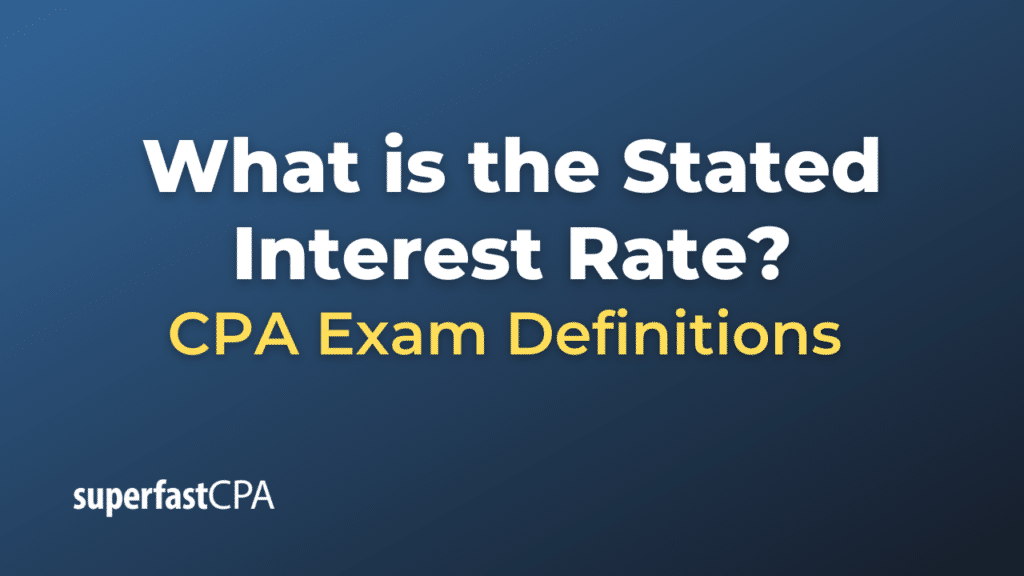Stated Interest Rate
The stated interest rate, also known as the nominal interest rate or coupon rate, is the interest rate that is explicitly stated or named in a financial instrument, such as a loan or bond. It represents the amount of interest, in percentage terms, that will be paid on the principal (or face value) over a specific period.
Here’s a bit more detail:
- Bonds: In the case of bonds, the stated interest rate is typically the rate at which bondholders will receive interest payments. For instance, if a bond has a face value of $1,000 and a stated interest rate of 5%, the bondholder would receive interest payments totaling $50 per year.
- Loans: For loans, the stated interest rate is the rate at which interest accrues on the outstanding balance.
- Difference from Effective Interest Rate: While the stated interest rate provides the nominal rate for interest calculations, the effective interest rate (or annual percentage rate, APR) takes into account any additional costs or fees associated with the borrowing. The effective rate may be higher than the stated rate because it reflects the true cost of borrowing when considering these extra charges.
- Fixed vs. Variable: The stated interest rate can be fixed, meaning it remains constant over the life of the instrument, or variable, meaning it can change based on certain underlying benchmarks or conditions.
Example of the Stated Interest Rate
Let’s delve into a detailed example involving a bond.
Scenario:
Jenna decides to invest in a corporate bond issued by XYZ Corporation.
Bond Details:
- Face Value (Principal): $1,000
- Stated Interest Rate (Coupon Rate): 7% annually
- Maturity: 5 years
- Payment Frequency: Annually
Interest Payments:
Given the stated interest rate of 7%, Jenna can expect to receive interest payments based on this rate applied to the bond’s face value.
Annual Interest Payment = Stated Interest Rate × Face Value
= 7% of $1,000
= $70
Thus, Jenna will receive an annual interest payment of $70 every year for the 5-year duration of the bond.
Total Interest Over Maturity:
Over the bond’s entire 5-year maturity, Jenna will receive: $70 × 5 = $350 in total interest payments.
Return of Principal:
At the end of the 5-year maturity period, Jenna will also receive back the bond’s face value of $1,000.
Effective Interest Rate Consideration:
Now, let’s add a twist. Suppose Jenna did not buy the bond at its face value but instead purchased it at a premium for $1,050. The reason for the premium could be that the bond’s 7% stated interest rate is higher than what other similar bonds are currently offering in the market.
In this case, while the stated interest rate remains 7%, Jenna’s effective yield or rate of return will be slightly lower because she paid more than the face value for the bond. The exact calculation would require a more complex formula, factoring in the premium paid and the annual coupon payments relative to the purchase price.
This example illustrates the stated interest rate’s role in determining the expected interest payments from an investment. When comparing different investment opportunities or loan options, it’s essential to consider both the stated and effective rates to get a complete understanding of the potential costs or returns.













